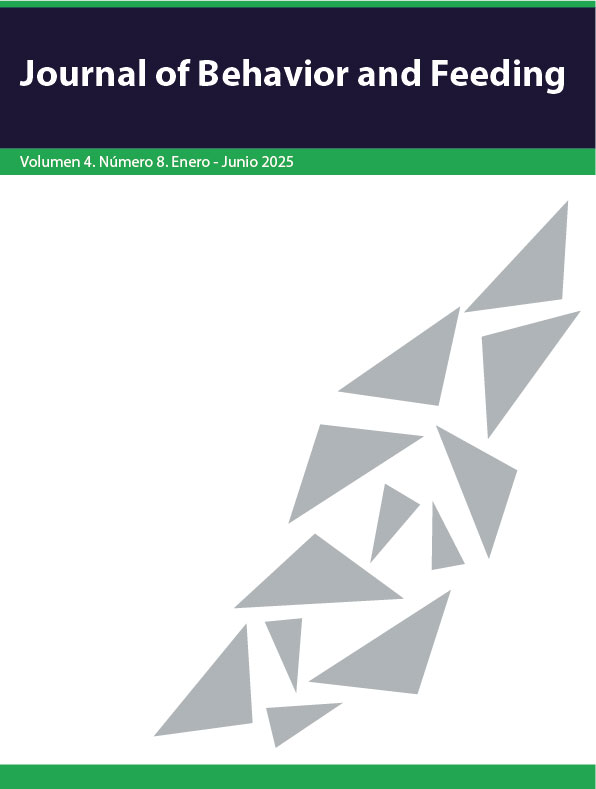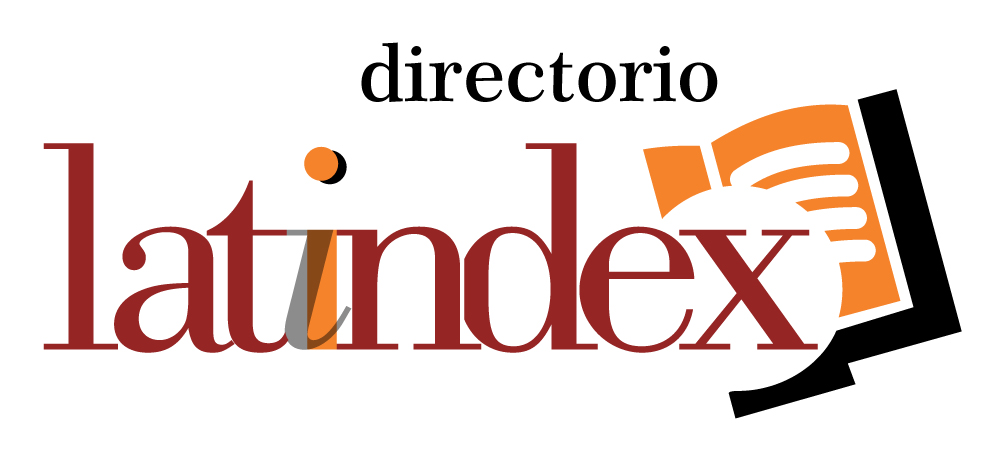The impact of Artificial Intelligence on health: A transformation of eating behavior
DOI:
https://doi.org/10.32870/jbf.v4i8.64Keywords:
artificial intelligence, feeding behavior, nutrition, healthAbstract
This article analyzes the impact of artificial intelligence (AI) on eating behavior, showing how this technology is transforming food production, consumption, preferences and eating habits. Three main perspectives are explored: biological, psychological and socio anthropological. From a biological perspective, AI enables the analysis of genetic and metabolic data to personalize dietary recommendations, thus optimizing individual health. In the psychological perspective, AI helps identify how emotions and mood influence dietary choices, enabling more effective interventions. In the socio anthropological setting, AI can integrate cultural, demographic and economic data to recommend diets that respect food traditions and accessibility. This perspective also includes AI applications in nutrition through apps and software that create personalized meal plans that dynamically adjust to dietary recommendations, resulting in useful tools for healthcare professionals. On the other hand, in food production, AI optimizes crop and resource management, improving the efficiency and sustainability of the supply chain. Finally, the challenges and opportunities presented by the integration of AI in eating behavior and how these technologies can contribute to better overall health and well-being are mentioned.
Downloads
References
Ávila-Tomás, J., Mayer-Pujadas, M., y Quesada-Varela, V. (2020). La inteligencia artificial y sus aplicaciones en medicina I: Introducción, antecedentes a la IA y robótica. Atención Primaria, 52(10), 778–784. https://doi.org/10.1016/j.aprim.2020.04.013
Ávila-Tomás, J. F., Mayer-Pujadas, M. A., y Quesada-Varela, V. J. (2021). La inteligencia artificial y sus aplicaciones en medicina II: Importancia actual y aplicaciones prácticas. Atención Primaria, 53(1), 81–88. https://doi.org/10.1016/j.aprim.2020.04.014
Barzallo, S., y Barzallo, P. (2020). La inteligencia artificial en medicina. Ateneo, 21(2), 81-94.
Beraud, I.P. (2018). Cuarta revolución industrial. Impacto de la inteligencia artificial en el modo de producción actual. Conjeturas Sociológicas, 43-57. https://revistas.ues.edu.sv/index.php/conjsociologicas/article/view/1423/1345
Busnatu, ?., Niculescu, A., Bolocan, A., Petrescu, G. E. D., P?duraru, D. N., N?stas?, I., Lupu?oru, M., Geant?, M., Andronic, O., Grumezescu, A. M., y Martins, H. (2022). Clinical applications of artificial intelligence—An updated overview. Journal of Clinical Medicine, 11(8), 2265. https://doi.org/10.3390/jcm11082265
Cavalcante, R., y de Souza, R. D. (2023). Artificial intelligence in agriculture: Benefits, challenges, and trends. Applied Sciences, 13, 7405. https://doi.org/10.3390/app13137405
Celis-Morales, C., Lara, J., y Mathers, J. C. (2015). Personalising nutritional guidance for more effective behaviour change. Proceedings of the Nutrition Society, 74(2), 130-138.
Chacón, J. G., Flórez, A. S., y Rodríguez, J. E. (2015). La inteligencia artificial y sus contribuciones a la física médica y la bioingeniería. Mundo Fesc, 5(9), 60-63. https://www.fesc.edu.co/Revistas/OJS/index.php/mundofesc/article/view/59/101
Chew, H. S. J., Chew, N. W., Loong, S. S. E., Lim, S. L., Tam, W. S. W., Chin, Y. H., Chao, A. M., Dimitriadis, G. K., Gao, Y., So, J. B. Y., Shabbir, A., y Ngiam, K. Y. (2024). Effectiveness of an artificial intelligence-assisted app for improving eating behaviors: Mixed methods evaluation. Journal of Medical Internet Research, 26, e46036. https://doi.org/10.2196/46036
Doménech, S., Santos, P. M., Porta, X., Albino-Pires, N., Benali, A., Nebot, O., ... y Nebot, À. (2023). Programa de reminiscencia apoyado en inteligencia artificial y basado en el patrimonio cultural inmaterial dirigido a personas mayores: Un estudio piloto. Revista Española de Geriatría y Gerontología, 58(2), 89-95. https://doi.org/10.1016/j.regg.2023.01.006
Expósito Gallardo, M. C., y Ávila Ávila R. (2008). Aplicaciones de la inteligencia artificial en la medicina: Perspectivas y problemas. ACIMED, 17(5), http://scielo.sld.cu/scielo.php?script=sci_arttext&pid=S1024-94352008000500005
Javaid, M., Haleem, A., Khan, I. H., y Suman, R. (2023). Understanding the potential applications of artificial intelligence in agriculture sector. Advanced Agrochem, 2(1), 15-30. https://doi.org/10.1016/j.aac.2022.10.001
Keskinbora, K., y Güven, F. (2020). Artificial intelligence and ophthalmology. Tu?rk Oftalmoloji Dergisi, 50(1), 37–43. https://doi.org/10.4274/tjo.galenos.2020.78989
Lanzagorta-Ortega, D., Carrillo-Pérez, D. L., y Carrillo-Esper, R. (2023). Inteligencia artificial en medicina: Presente y futuro. Gaceta Me?dica de Me?xico, 158(91). https://doi.org/10.24875/gmm.m22000688
Lawton, J., Blackburn, M., Allen, J., Campbell, F., Elleri, D., Leelarathna, L., Rankin, D., Tauschmann, M., Thabit, H., y Hovorka, R. (2018). Patients’ and caregivers’ experiences of using continuous glucose monitoring to support diabetes self-management: Qualitative study. BMC Endocrine Disorders, 18(1). https://doi.org/10.1186/s12902-018-0239-1
López-Espinoza, A. (2004). El fenómeno alimentario: ¿Un problema biológico o psicológico? Cuadernos de Nutrición, 27(4), 173-177.
López Espinoza, A., y Martínez, H. (2002). ¿Qué es el hambre? Una aproximación conceptual y una propuesta experimental. Investigación en Salud, 4(1). https://www.redalyc.org/pdf/142/14240104.pdf
López-Espinoza, A., y Martínez, A. G. (2012). La importancia de “comer bien”. México Social. https://www.mexicosocial.org/la-importancia-de-comer-bien/
Márquez, P. R., Reed, J. N., García, C. L., y Robledo, I. (2022). Inteligencia artificial en la industria alimentaria. Revista Electro, 44, 225-229. https://itchihuahua.mx/revista_electro/2022/SUB-6830.pdf
Martínez, A. G., López-Espinoza, A., y Díaz, F. J. (2007). Modelos de regulación en la conducta alimentaria. Investigación en Salud, 9(3), 172-177. https://www.medigraphic.com/pdfs/invsal/isg-2007/isg073e.pdf
Medina Gamero, A., y Regalado Chamorro, M. (2021). La inteligencia artificial en el control de la COVID-19. Atención Primaria, 53(10), 102099. https://doi.org/10.1016/j.aprim.2021.102099
Pavelka, J. (2021). Technology, work and eating behaviour. Journal of Behavior and Feeding, 1(1), 78–85. https://doi.org/10.32870/jbf.v1i1.17
Raraz-Vidal, J., y Raraz-Vidal, O. (2022). Aplicaciones de la inteligencia artificial en la medicina. Revista Peruana de Investigación en Salud, 6(3), 131–133. https://doi.org/10.35839/repis.6.3.1559
Regalia, G., Onorati, F., Lai, M., Caborni, C., y Picard, R. W. (2019). Multimodal wrist-worn devices for seizure detection and advancing research: Focus on the Empatica wristbands. Epilepsy Research, 153, 79–82. https://doi.org/10.1016/j.eplepsyres.2019.02.007
Rivera Valdivia, K. C. (2022). Aplicación de la inteligencia artificial en la nutrición personalizada. Revista de Investigaciones, 11(4), 265-277. https://doi.org/10.26788/ri.v11i4.3990
Schwab, K. (2020). La cuarta revolución industrial. Futuro Hoy, 1(1), 6-10. https://doi.org/10.5281/zenodo.4299164
Torres, A., Cisneros-Herrera, J., y Guzmán-Díaz, G. (2022). Comportamiento alimentario: Revisión conceptual. Boletín Científico de la Escuela Superior Atotonilco de Tula, 9(17), 38-44. https://repository.uaeh.edu.mx/revistas/index.php/atotonilco/article/view/8154/8345
Urrialde, R. (2023). La inteligencia artificial en la alimentación. Newsletter RAED No. 348. https://raed.academy/la-inteligencia-artificial-en-la-alimentacion/
Yang, Y. J., y Bang, C. S. (2019). Application of artificial intelligence in gastroenterology. World Journal of Gastroenterology, 25(14), 1666–1683. https://doi.org/10.3748/wjg.v25.i14.1666
Young, A. T., Xiong, M., Pfau, J., Keiser, M. J., y Wei, M. L. (2020). Artificial intelligence in dermatology: A primer. Journal of Investigative Dermatology, 140(8), 1504-1512. https://doi.org/10.1016/j.jid.2020.02.026
Zhu, J., y Wang, G. (2023). Artificial intelligence technology for food nutrition. Nutrients, 15(21), 4562. https://doi.org/10.3390/nu15214562
Published
How to Cite
Issue
Section
License
Copyright (c) 2025 Authors

This work is licensed under a Creative Commons Attribution 4.0 International License.
This is an open-access article distributed under the terms of the Creative Commons Attribution License (CC BY). The use, distribution or reproduction is permitted, provided the original author(s) and the copyright owner(s) are credited and that the original publication in this journal is cited, in accordance with accepted academic practice. No use, distribution or reproduction is permitted which does not comply with these terms.







